HSBC 2006 Annual Report Download - page 410
Download and view the complete annual report
Please find page 410 of the 2006 HSBC annual report below. You can navigate through the pages in the report by either clicking on the pages listed below, or by using the keyword search tool below to find specific information within the annual report.-
 1
1 -
 2
2 -
 3
3 -
 4
4 -
 5
5 -
 6
6 -
 7
7 -
 8
8 -
 9
9 -
 10
10 -
 11
11 -
 12
12 -
 13
13 -
 14
14 -
 15
15 -
 16
16 -
 17
17 -
 18
18 -
 19
19 -
 20
20 -
 21
21 -
 22
22 -
 23
23 -
 24
24 -
 25
25 -
 26
26 -
 27
27 -
 28
28 -
 29
29 -
 30
30 -
 31
31 -
 32
32 -
 33
33 -
 34
34 -
 35
35 -
 36
36 -
 37
37 -
 38
38 -
 39
39 -
 40
40 -
 41
41 -
 42
42 -
 43
43 -
 44
44 -
 45
45 -
 46
46 -
 47
47 -
 48
48 -
 49
49 -
 50
50 -
 51
51 -
 52
52 -
 53
53 -
 54
54 -
 55
55 -
 56
56 -
 57
57 -
 58
58 -
 59
59 -
 60
60 -
 61
61 -
 62
62 -
 63
63 -
 64
64 -
 65
65 -
 66
66 -
 67
67 -
 68
68 -
 69
69 -
 70
70 -
 71
71 -
 72
72 -
 73
73 -
 74
74 -
 75
75 -
 76
76 -
 77
77 -
 78
78 -
 79
79 -
 80
80 -
 81
81 -
 82
82 -
 83
83 -
 84
84 -
 85
85 -
 86
86 -
 87
87 -
 88
88 -
 89
89 -
 90
90 -
 91
91 -
 92
92 -
 93
93 -
 94
94 -
 95
95 -
 96
96 -
 97
97 -
 98
98 -
 99
99 -
 100
100 -
 101
101 -
 102
102 -
 103
103 -
 104
104 -
 105
105 -
 106
106 -
 107
107 -
 108
108 -
 109
109 -
 110
110 -
 111
111 -
 112
112 -
 113
113 -
 114
114 -
 115
115 -
 116
116 -
 117
117 -
 118
118 -
 119
119 -
 120
120 -
 121
121 -
 122
122 -
 123
123 -
 124
124 -
 125
125 -
 126
126 -
 127
127 -
 128
128 -
 129
129 -
 130
130 -
 131
131 -
 132
132 -
 133
133 -
 134
134 -
 135
135 -
 136
136 -
 137
137 -
 138
138 -
 139
139 -
 140
140 -
 141
141 -
 142
142 -
 143
143 -
 144
144 -
 145
145 -
 146
146 -
 147
147 -
 148
148 -
 149
149 -
 150
150 -
 151
151 -
 152
152 -
 153
153 -
 154
154 -
 155
155 -
 156
156 -
 157
157 -
 158
158 -
 159
159 -
 160
160 -
 161
161 -
 162
162 -
 163
163 -
 164
164 -
 165
165 -
 166
166 -
 167
167 -
 168
168 -
 169
169 -
 170
170 -
 171
171 -
 172
172 -
 173
173 -
 174
174 -
 175
175 -
 176
176 -
 177
177 -
 178
178 -
 179
179 -
 180
180 -
 181
181 -
 182
182 -
 183
183 -
 184
184 -
 185
185 -
 186
186 -
 187
187 -
 188
188 -
 189
189 -
 190
190 -
 191
191 -
 192
192 -
 193
193 -
 194
194 -
 195
195 -
 196
196 -
 197
197 -
 198
198 -
 199
199 -
 200
200 -
 201
201 -
 202
202 -
 203
203 -
 204
204 -
 205
205 -
 206
206 -
 207
207 -
 208
208 -
 209
209 -
 210
210 -
 211
211 -
 212
212 -
 213
213 -
 214
214 -
 215
215 -
 216
216 -
 217
217 -
 218
218 -
 219
219 -
 220
220 -
 221
221 -
 222
222 -
 223
223 -
 224
224 -
 225
225 -
 226
226 -
 227
227 -
 228
228 -
 229
229 -
 230
230 -
 231
231 -
 232
232 -
 233
233 -
 234
234 -
 235
235 -
 236
236 -
 237
237 -
 238
238 -
 239
239 -
 240
240 -
 241
241 -
 242
242 -
 243
243 -
 244
244 -
 245
245 -
 246
246 -
 247
247 -
 248
248 -
 249
249 -
 250
250 -
 251
251 -
 252
252 -
 253
253 -
 254
254 -
 255
255 -
 256
256 -
 257
257 -
 258
258 -
 259
259 -
 260
260 -
 261
261 -
 262
262 -
 263
263 -
 264
264 -
 265
265 -
 266
266 -
 267
267 -
 268
268 -
 269
269 -
 270
270 -
 271
271 -
 272
272 -
 273
273 -
 274
274 -
 275
275 -
 276
276 -
 277
277 -
 278
278 -
 279
279 -
 280
280 -
 281
281 -
 282
282 -
 283
283 -
 284
284 -
 285
285 -
 286
286 -
 287
287 -
 288
288 -
 289
289 -
 290
290 -
 291
291 -
 292
292 -
 293
293 -
 294
294 -
 295
295 -
 296
296 -
 297
297 -
 298
298 -
 299
299 -
 300
300 -
 301
301 -
 302
302 -
 303
303 -
 304
304 -
 305
305 -
 306
306 -
 307
307 -
 308
308 -
 309
309 -
 310
310 -
 311
311 -
 312
312 -
 313
313 -
 314
314 -
 315
315 -
 316
316 -
 317
317 -
 318
318 -
 319
319 -
 320
320 -
 321
321 -
 322
322 -
 323
323 -
 324
324 -
 325
325 -
 326
326 -
 327
327 -
 328
328 -
 329
329 -
 330
330 -
 331
331 -
 332
332 -
 333
333 -
 334
334 -
 335
335 -
 336
336 -
 337
337 -
 338
338 -
 339
339 -
 340
340 -
 341
341 -
 342
342 -
 343
343 -
 344
344 -
 345
345 -
 346
346 -
 347
347 -
 348
348 -
 349
349 -
 350
350 -
 351
351 -
 352
352 -
 353
353 -
 354
354 -
 355
355 -
 356
356 -
 357
357 -
 358
358 -
 359
359 -
 360
360 -
 361
361 -
 362
362 -
 363
363 -
 364
364 -
 365
365 -
 366
366 -
 367
367 -
 368
368 -
 369
369 -
 370
370 -
 371
371 -
 372
372 -
 373
373 -
 374
374 -
 375
375 -
 376
376 -
 377
377 -
 378
378 -
 379
379 -
 380
380 -
 381
381 -
 382
382 -
 383
383 -
 384
384 -
 385
385 -
 386
386 -
 387
387 -
 388
388 -
 389
389 -
 390
390 -
 391
391 -
 392
392 -
 393
393 -
 394
394 -
 395
395 -
 396
396 -
 397
397 -
 398
398 -
 399
399 -
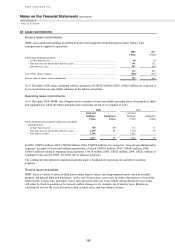 400
400 -
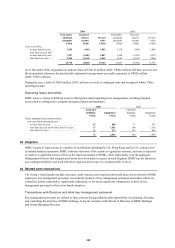 401
401 -
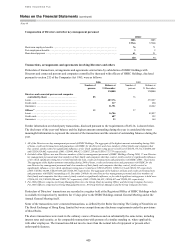 402
402 -
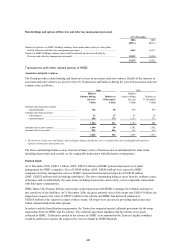 403
403 -
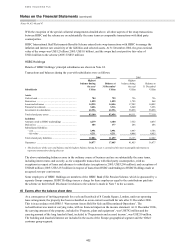 404
404 -
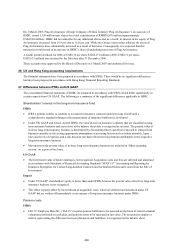 405
405 -
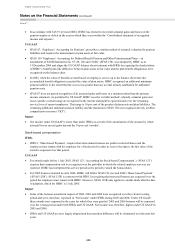 406
406 -
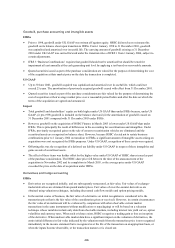 407
407 -
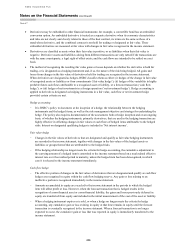 408
408 -
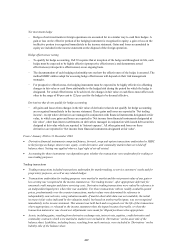 409
409 -
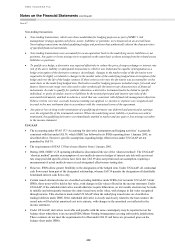 410
410 -
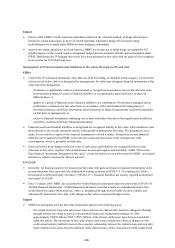 411
411 -
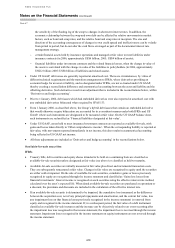 412
412 -
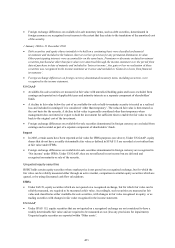 413
413 -
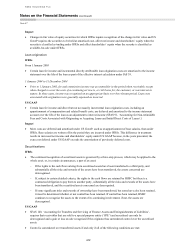 414
414 -
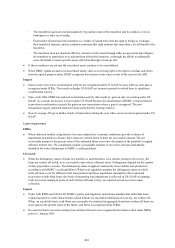 415
415 -
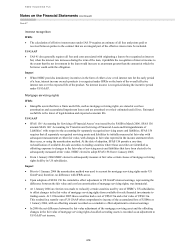 416
416 -
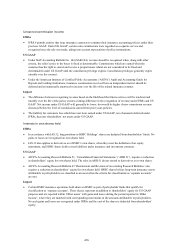 417
417 -
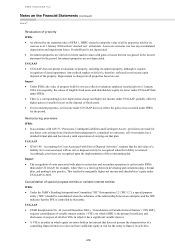 418
418 -
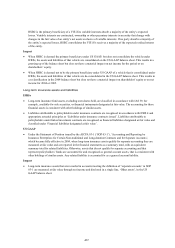 419
419 -
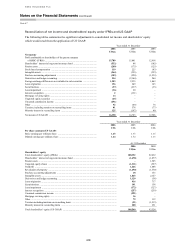 420
420 -
 421
421 -
 422
422 -
 423
423 -
 424
424 -
 425
425 -
 426
426 -
 427
427 -
 428
428 -
 429
429 -
 430
430 -
 431
431 -
 432
432 -
 433
433 -
 434
434 -
 435
435 -
 436
436 -
 437
437 -
 438
438 -
 439
439 -
 440
440 -
 441
441 -
 442
442 -
 443
443 -
 444
444 -
 445
445 -
 446
446 -
 447
447 -
 448
448 -
 449
449 -
 450
450 -
 451
451 -
 452
452 -
 453
453 -
 454
454 -
 455
455 -
 456
456 -
 457
457 -
 458
458
 |
 |

HSBC HOLDINGS PLC
Notes on the Financial Statements (continued)
Note 47
408
Non-trading transactions
• Non-trading transactions, which were those undertaken for hedging purposes as part of HSBC’s risk
management strategy against cash flows, assets, liabilities or positions, were measured on an accrual basis.
Non-trading transactions included qualifying hedges and positions that synthetically altered the characteristics
of specified financial instruments.
• Non-trading transactions were accounted for on an equivalent basis to the underlying assets, liabilities or net
positions. Any gains or losses arising were recognised on the same basis as those arising from the related assets,
liabilities or positions.
• To qualify as a hedge, a derivative was required effectively to reduce the price, foreign exchange or interest rate
risk of the asset, liability or anticipated transaction to which it was linked and be capable of designation as a
hedge at inception of the derivative contract. Accordingly, changes in the market value of the derivative were
required to be highly correlated to changes in the market value of the underlying hedged item at inception of the
hedge and over the life of the hedge contract. If these criteria were met, the derivative was accounted for on the
same basis as the underlying hedged item. Derivatives used for hedging purposes included swaps, forwards and
futures. Interest rate swaps were also used to alter synthetically the interest rate characteristics of financial
instruments. In order to qualify for synthetic alteration, a derivative instrument had to be linked to specific
individual, or pools of similar, assets or liabilities by the notional principal and interest rate risks of the
associated instruments, and had to achieve a result that was consistent with defined risk management objectives.
If these criteria were met, accruals based accounting was applied, i.e. income or expense was recognised and
accrued to the next settlement date in accordance with the contractual terms of the agreement.
• Any gain or loss arising on the termination of a qualifying derivative was deferred and amortised to earnings
over the original life of the terminated contract. Where the underlying asset, liability or position was sold or
terminated, the qualifying derivative was immediately marked to market and any gain or loss arising was taken
to the income statement.
US GAAP
• The accounting under SFAS 133 ‘Accounting for derivative instruments and hedging activities’ is generally
consistent with that under IAS 39, which HSBC has followed in its IFRSs reporting from 1 January 2005, as
described above. However, specific assumptions regarding hedge effectiveness under US GAAP are not
permitted by IAS 39.
• The requirements of SFAS 133 have been effective from 1 January 2001.
• During 2006, HSBC’s US operating subsidiaries discontinued the use of the ‘shortcut method’. The US GAAP
‘shortcut method’ permits an assumption of zero ineffectiveness in hedges of interest rate risk with an interest
rate swap provided specific criteria have been met. IAS 39 does not permit such an assumption, requiring a
measurement of actual ineffectiveness at each designated effectiveness testing date.
• However, IFRSs allow greater flexibility in the designation of the hedged item. Under US GAAP, all contractual
cash flows must form part of the designated relationship, whereas IAS 39 permits the designation of identifiable
benchmark interest cash flows only.
• Certain issued structured notes are classified as trading liabilities under IFRSs, but not under US GAAP. Under
IFRSs, these notes will be held at fair value, with changes in fair value reflected in the income statement. Under
US GAAP, if the embedded derivative would otherwise require bifurcation, an irrevocable election may be made
to initially and subsequently measure the entire issued note at fair value, with changes in fair value recognised
through income. This election is made under US GAAP when the underlying issued notes are classified as
trading liabilities under IFRS. If the embedded derivative is clearly and closely related to the host contract, the
issued note will be held at amortised cost in its entirety, with changes in the amortised cost reflected in the
income statement.
• Under US GAAP, derivatives receivable and payable with the same counterparty may be reported net on the
balance sheet when there is an executed ISDA Master Netting Arrangement covering enforceable jurisdictions.
These contracts do not meet the requirements for offset under IAS 32 and hence are presented gross on the
balance sheet under IFRSs.
